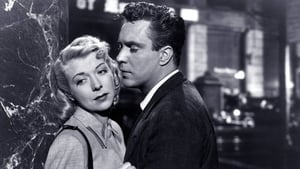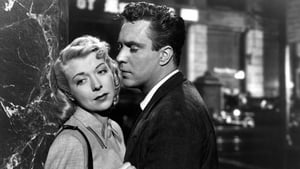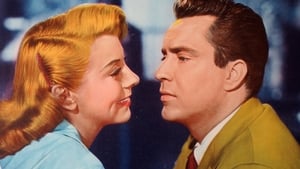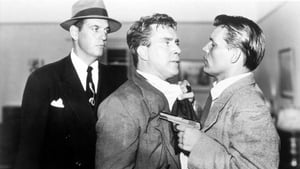Contact: [email protected]
Video Sources 0 Views
- Watch trailer
- D.O.A.

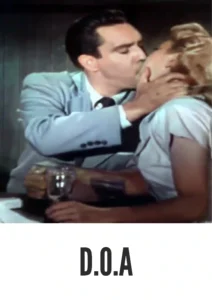
Synopsis
Table of Contents
ToggleReview: D.O.A. (1949) – A Gripping and Inventive Film Noir

Introduction
D.O.A., released in 1949, is a captivating film noir directed by Rudolph Maté that plunges viewers into a world of mystery, danger, and desperation. Renowned for its innovative narrative structure, intense atmosphere, and powerhouse performances, this classic thriller continues to enthrall audiences with its relentless pursuit of truth and justice. In this review, we’ll delve into the gripping world of D.O.A. and its enduring legacy in the annals of cinema.
Check The Full Colorized Movies List
Check Our Colorized Movies Trailer Channel
Understanding D.O.A. (1949): Director, Cast, and Genre
Directed by Rudolph Maté, D.O.A. features a stellar cast led by Edmond O’Brien and Pamela Britton. The film belongs to the film noir genre, characterized by its shadowy visuals, morally ambiguous characters, and bleak outlook on human nature.
Exploring the World of D.O.A. (1949): Plot and Characters
D.O.A. follows the story of Frank Bigelow, an ordinary accountant who discovers that he has been poisoned and has only days to live. Determined to uncover the truth behind his impending demise, Frank embarks on a frantic quest for answers that leads him into a web of deception, betrayal, and danger. As he races against the clock to solve the mystery of his own murder, Frank confronts his own mortality and the dark secrets that lie buried within the city’s seedy underbelly.
The Art of Film Colorization
While D.O.A. was originally filmed in black and white, its early colorized version adds a new layer of depth to its atmospheric visuals. The colorization process enhances the film’s gritty realism and captures the nuances of its shadowy characters with striking clarity.
Early Colored Films: A Brief History
The history of early colored films is marked by innovation and experimentation as filmmakers sought to enhance the visual appeal of their movies. From hand-tinted frames to pioneering technicolor processes, the evolution of colorization techniques transformed the cinematic landscape, offering audiences a new way to experience the darkness and intensity of film noir.
D.O.A. (1949) and Its Early Colored Version
The decision to release D.O.A. in a colorized format was made with the intention of immersing audiences in the gritty realism of its urban setting and enhancing the film’s visual impact. While some purists may prefer the original black and white version, the early colorized edition of D.O.A. adds a new layer of depth to its atmospheric cinematography and captures the moral ambiguity of its characters with breathtaking clarity.
The Debate Over Film Colorization
The debate over film colorization continues to divide audiences and industry professionals alike. While some argue that colorization breathes new life into classic films and makes them more accessible to modern audiences, others maintain that it compromises the artistic integrity of the original work. As technology advances and filmmaking techniques evolve, the debate over colorization remains a topic of ongoing discussion within the film community.
Examining D.O.A. (1949) as an Early Colored Film
Viewing D.O.A. in its early colorized iteration offers audiences a fresh perspective on its gritty realism and morally complex characters. The colorization process enhances the film’s atmospheric cinematography and captures the tension and desperation of its protagonist’s desperate quest for truth with stunning clarity. As viewers are drawn into Frank Bigelow’s race against time, they are treated to a visual feast that immerses them in the relentless pursuit of justice.
Influence and Legacy: D.O.A. (1949)’s Impact on Cinema
D.O.A. is widely regarded as a seminal work in the film noir genre that continues to influence filmmakers and inspire new generations of cinephiles. Its innovative narrative structure, intense atmosphere, and powerhouse performances have left an indelible mark on cinema, shaping the way thrillers are made and appreciated to this day.
Director’s Cinematic Legacy: Beyond D.O.A. (1949)
Rudolph Maté’s directorial legacy extends far beyond D.O.A., encompassing a diverse body of work that includes acclaimed films such as Branded and Union Station. As one of the most respected filmmakers of his generation, Maté was known for his ability to craft compelling narratives that explored the darker aspects of the human experience with depth and nuance. D.O.A. stands as a testament to his talent and creativity, solidifying his reputation as one of the great auteurs of classic Hollywood cinema.
Themes Explored in D.O.A. (1949)
At its core, D.O.A. explores themes of mortality, justice, and the search for truth in a world shrouded in darkness and deception. Through its morally complex characters and intense atmosphere, the film offers a gripping portrayal of the human condition, challenging viewers to confront their own beliefs about right and wrong as they navigate the treacherous waters of the criminal underworld.
Reception and Controversy Surrounding D.O.A. (1949)
Upon its release, D.O.A. received widespread critical acclaim for its innovative narrative structure, intense atmosphere, and powerhouse performances. While the decision to release the film in a colorized format sparked debate among purists, its enduring popularity has cemented its status as a timeless classic of the film noir genre.
Where to Watch D.O.A. (1949) Online
For those eager to experience D.O.A. for themselves, the film is readily available on popular streaming platforms such as Amazon Prime Video, Google Play Movies, and iTunes. Whether viewed in its original black and white format or its early colorized iteration, D.O.A. offers a cinematic experience that is both gripping and visually stunning.
FAQs About D.O.A. (1949)
1. Is D.O.A. based on a true story?
No, D.O.A. is a fictional film that explores the desperate quest for truth and justice in a world shrouded in darkness and deception. While the film’s storyline may draw inspiration from real-life events, its characters and plot are works of fiction.
2. Who starred in D.O.A.?
D.O.A. stars Edmond O’Brien in the role of Frank Bigelow, a man who discovers that he has been poisoned and has only days to live. He is supported by Pamela Britton, who delivers a memorable performance as his loyal girlfriend, Paula Gibson.
3. What is the central message of D.O.A.?
At its core, D.O.A. explores the consequences of mortality and the relentless pursuit of truth and justice in the face of overwhelming odds. Through its morally complex characters and intense atmosphere, the film offers a gripping portrayal of the human condition, challenging viewers to confront their own beliefs about right and wrong as they navigate the treacherous waters of the criminal underworld.
4. Why was D.O.A. released in a colorized format?
The decision to release D.O.A. in a colorized format was made with the intention of immersing audiences in the gritty realism of its urban setting and enhancing the film’s visual impact. While some purists may prefer the original black and white version, the early colorized edition of D.O.A. adds a new layer of depth to its atmospheric cinematography and captures the moral ambiguity of its characters with breathtaking clarity.
5. What is the legacy of D.O.A.?
D.O.A. is widely regarded as a seminal work in the film noir genre that continues to influence filmmakers and inspire new generations of cinephiles. Its innovative narrative structure, intense atmosphere, and powerhouse performances have left an indelible mark on cinema, shaping the way thrillers are made and appreciated to this day.
6. Are there any sequels or remakes of D.O.A.?
No, there have been no official sequels or remakes of D.O.A.. However, the film’s enduring popularity has inspired countless reinterpretations and homages in various media. Nonetheless, none have captured the innovative spirit and intense atmosphere of the original 1949 classic.
7. Where can I watch D.O.A. online?
For those eager to experience D.O.A. for themselves, the film is readily available on popular streaming platforms such as Amazon Prime Video, Google Play Movies, and iTunes. Whether viewed in its original black and white format or its early colorized iteration, D.O.A. offers a cinematic experience that is both gripping and visually stunning.
Conclusion
In conclusion, D.O.A. (1949) stands as a gripping and inventive film noir that continues to captivate audiences with its innovative narrative structure, intense atmosphere, and powerhouse performances. Whether viewed in its original black and white format or its early colorized iteration, Rudolph Maté’s insightful direction and the stellar performances of the cast offer a cinematic experience that is both gripping and visually stunning. As viewers are drawn into Frank Bigelow’s desperate quest for truth and justice, they are treated to a visceral journey that challenges their beliefs about right and wrong and leaves a lasting impact on their understanding of the human condition. D.O.A. remains a timeless classic that continues to enthrall and inspire audiences around the world.
